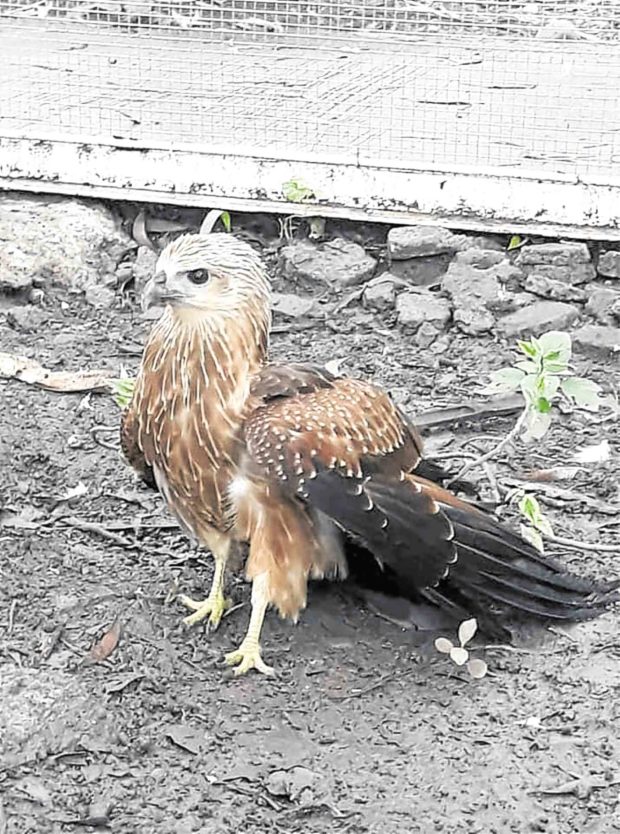
GOOD PROGRESS This injured juvenile Brahminy kite (locally known as “banog” and “lawin”) is recovering at a temporary flight cage. —Environmental Conservation and Protection Center-Sarangani
ALABEL, SARANGANI—How can a bird be made to fly again?
This was the question that faced workers in a government conservation facility here as they stepped up efforts to restore the flight of a juvenile Brahminy kite (Haliastur indus that was found on June 13.
The bird, locally known as “banog” and “lawin,” has been treated for a breast wound at the Environmental Conservation and Protection Center (ECPC)-Sarangani for three weeks now.
Hopping weakly
Dr. Roy Operario Mejorada, a veterinarian and ECPC program manager, said the bird was found on June 13 by students of Alabel Science High School, hopping weakly in the school grounds.
Daniel Zabale, a school teacher, turned over the bird to the ECPC-Sarangani.
When found, the bird was weak and dehydrated. A physical examination showed a puncture that affected its breast muscles.
“It appeared he was hit by a pellet from an air gun,” Mejorada said, adding that immediate medical intervention was initiated to address the dehydration and prevent possible infection.
In the last three weeks, the bird’s healing was making good progress. It already had a good appetite.
But Mejorada said further study was being undertaken because “the bird was still unable to fly.” It remained under close monitoring at the temporary flight cage of the Wildlife Rehabilitation Facility of ECPC-Sarangani.
Scavengers
Brahminy kites are medium-sized raptors common in the area. They are known to be scavengers that will eat just about anything, including food waste and dead animals, such as fish and crabs.
They also hunt live prey, such as small mammals, small birds, crustaceans, amphibians, small reptiles, fish and insects.
Mejorada said the bird is protected under Republic Act No. 9147, the wildlife resources conservation and protection law. Possession, trading, killing or inflicting injury on this species is illegal and can earn one a penalty of six months to one year imprisonment and a fine of P10,000 to P50,000. —EDWIN FERNANDEZ